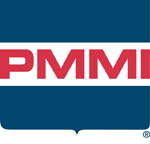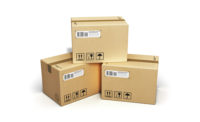Life imitated data at PACK EXPO International in November, where secondary packaging solutions on the show floor mirrored highlights of the PMMI 2014 “Secondary Packaging Market Research Study.” PMMI, The Association for Packaging and Processing Technologies, spoke about these trends on the first day of the show. 
The report details what is driving the transformation of secondary packaging. PACK EXPO exhibitors brought this to life by introducing solutions with fully customizable machinery that packs, seals and palletizes top-loaded cartons and cases. These types of technologies could be found throughout McCormick Place, with more than 2,350 exhibitors.
Trends driving change
Ultimately, the role of the secondary package is to protect the primary package during transport, and that shows no sign of changing. In fact, 45% of the food companies surveyed for PMMI’s report said as flexible packaging continues to increase, so does the demand for stronger secondary cartons. Moreover, 55 percent of beverage companies are lightweighting their primary packaging and moving away from glass to plastic, which also requires better support from secondary packaging.
But there’s another, newer purpose for secondary packaging as it is increasingly used as a selling tool at the point of purchase. Significant growth in e-commerce and secondary displays for in-store promotions are translating into greater corrugated usage, particularly within the realm of retail-ready packaging. Consumers increasingly prefer packages made from biodegradable, recycled and sustainable materials, and retailers are demanding shelf-ready solutions. As a result, packaging engineers are turning to cost-efficient, lightweight materials and recycled corrugated board.
The future of secondary packaging
The cost of corrugated boxes is projected to rise at an annualized rate of 3 percent through 2017, and this cost increase could prompt manufacturers to reevaluate their operations and suppliers. Current practices, such as lightweighting materials and the use of additives like synthetic starches and composite materials to strengthen recycled corrugated board, will continue.
However, new developments are also on the horizon, including the growing adoption of generic packaging and standard box sizes. The recent, rapid changes in packaging also point to future box styles yet to be designed.
Innovations in machine automation, robotics and biopolymer materials will continue to change the face of packaging. Secondary packaging will become more instrumental as track-and-trace regulations will continue to drive innovation with smarter, smaller sensors and the increased use of 2-D data matrix codes and scanning technologies. A stronger collaboration between customers and suppliers will be crucial to fostering innovation and packaging efficiencies that advance food manufacturing businesses.
Secondary packaging options and solutions will also be on display at PACK EXPO East, which will be held in Philadelphia from February 16-18, 2015.The regional show’s debut will feature more than 300 exhibitors in addition to innovations and education to help manufacturers find new secondary packaging innovations and approaches, as well as other educational opportunities. To learn more and register for PACK EXPO East, visit www.packexpoeast.com.





